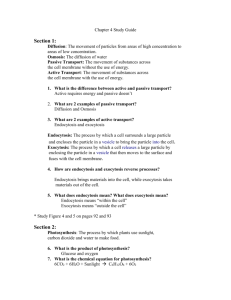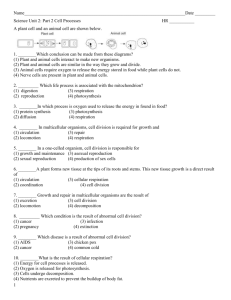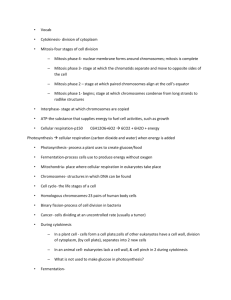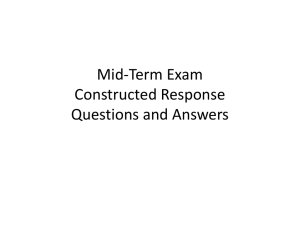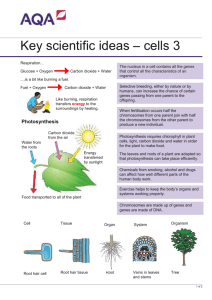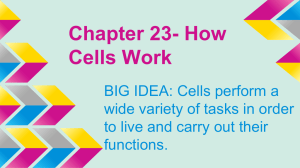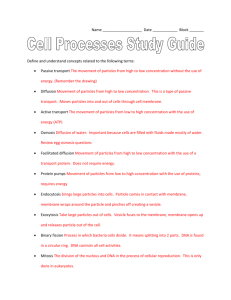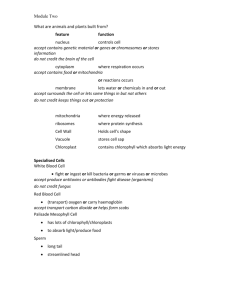Name: Date: CHAPTER 4 STUDY GUIDE Diffusion is the movement
advertisement
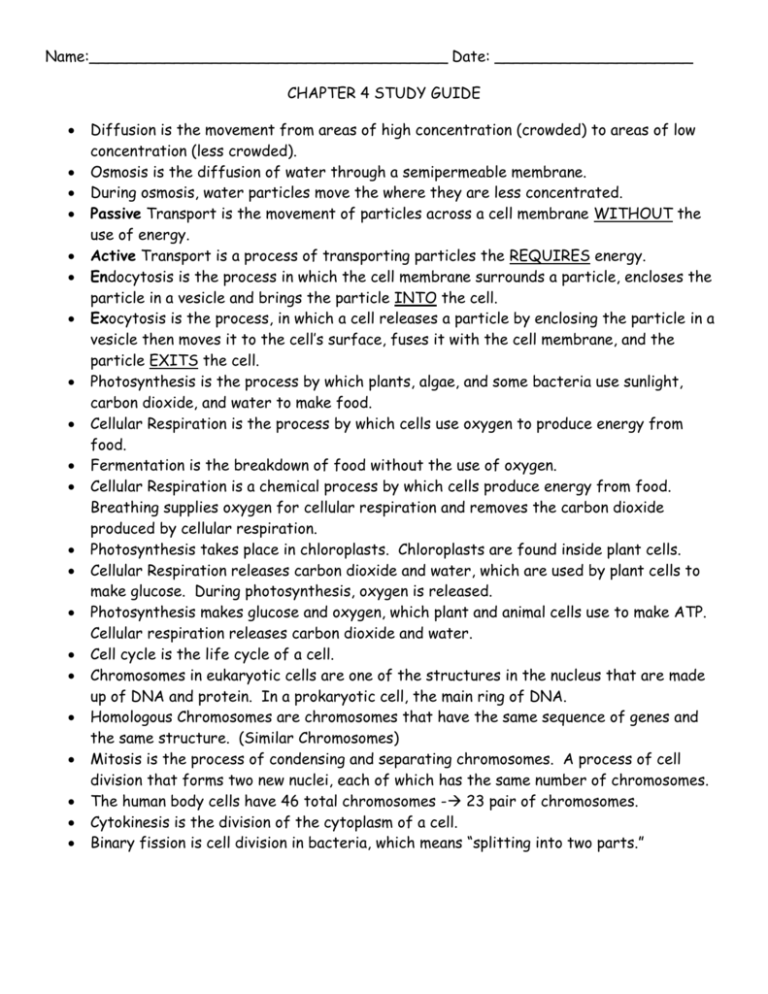
Name:______________________________________ Date: _____________________ CHAPTER 4 STUDY GUIDE Diffusion is the movement from areas of high concentration (crowded) to areas of low concentration (less crowded). Osmosis is the diffusion of water through a semipermeable membrane. During osmosis, water particles move the where they are less concentrated. Passive Transport is the movement of particles across a cell membrane WITHOUT the use of energy. Active Transport is a process of transporting particles the REQUIRES energy. Endocytosis is the process in which the cell membrane surrounds a particle, encloses the particle in a vesicle and brings the particle INTO the cell. Exocytosis is the process, in which a cell releases a particle by enclosing the particle in a vesicle then moves it to the cell’s surface, fuses it with the cell membrane, and the particle EXITS the cell. Photosynthesis is the process by which plants, algae, and some bacteria use sunlight, carbon dioxide, and water to make food. Cellular Respiration is the process by which cells use oxygen to produce energy from food. Fermentation is the breakdown of food without the use of oxygen. Cellular Respiration is a chemical process by which cells produce energy from food. Breathing supplies oxygen for cellular respiration and removes the carbon dioxide produced by cellular respiration. Photosynthesis takes place in chloroplasts. Chloroplasts are found inside plant cells. Cellular Respiration releases carbon dioxide and water, which are used by plant cells to make glucose. During photosynthesis, oxygen is released. Photosynthesis makes glucose and oxygen, which plant and animal cells use to make ATP. Cellular respiration releases carbon dioxide and water. Cell cycle is the life cycle of a cell. Chromosomes in eukaryotic cells are one of the structures in the nucleus that are made up of DNA and protein. In a prokaryotic cell, the main ring of DNA. Homologous Chromosomes are chromosomes that have the same sequence of genes and the same structure. (Similar Chromosomes) Mitosis is the process of condensing and separating chromosomes. A process of cell division that forms two new nuclei, each of which has the same number of chromosomes. The human body cells have 46 total chromosomes - 23 pair of chromosomes. Cytokinesis is the division of the cytoplasm of a cell. Binary fission is cell division in bacteria, which means “splitting into two parts.”


